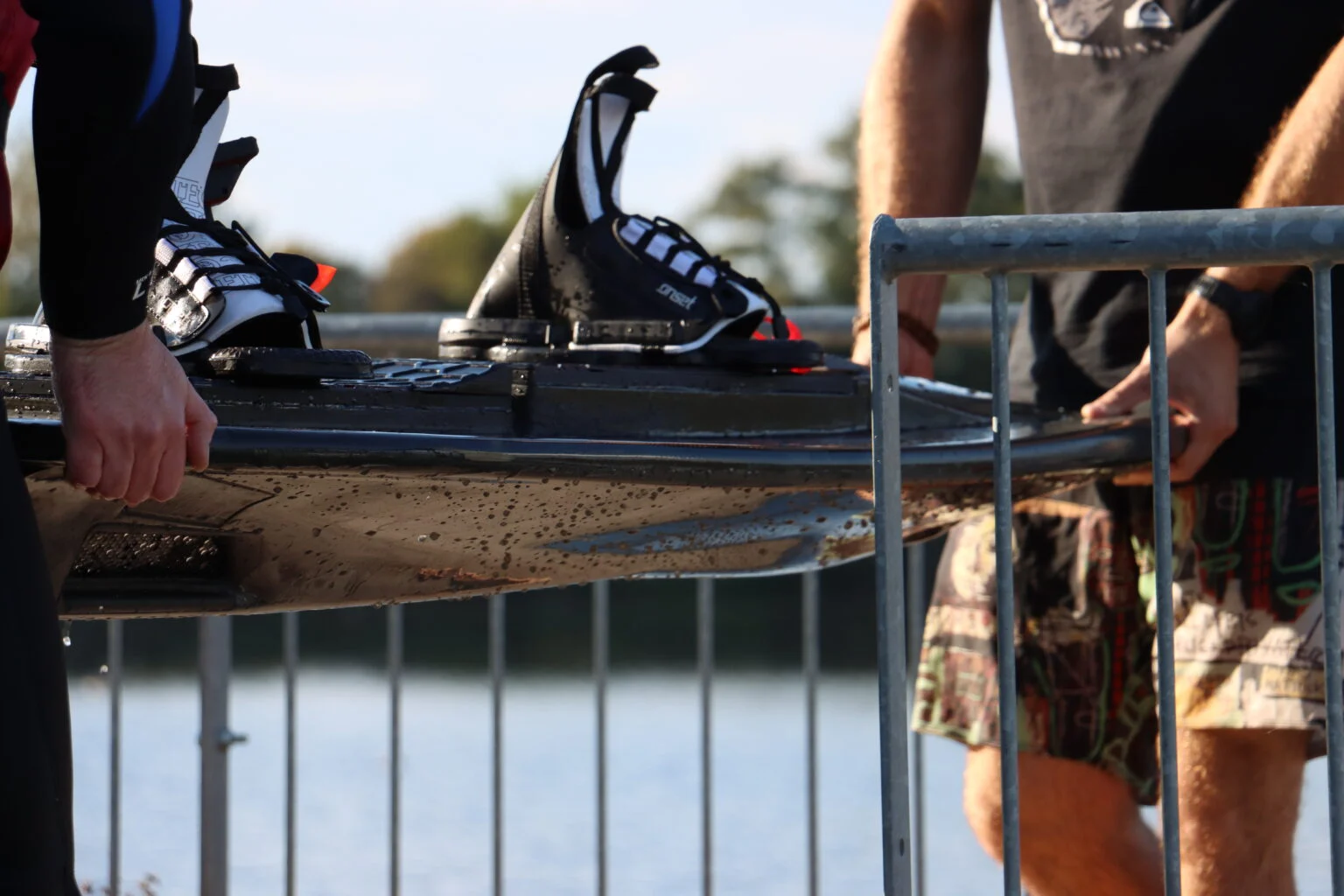Polymaker's FGF/LFAM Business Development Manager, Deborah Claxton, recently visited Krauss Maffei, our partner, to learn about the powerPrint System and how it utilizes pellet materials. With almost 190 years of experience, Krauss Maffei is a leading manufacturer of machinery and systems for the production and processing of plastics and rubber. The company has consistently been at the forefront of innovation, specializing in technologies such as injection molding, extrusion, and reaction processing. Now, Krauss Maffei is elevating its offerings by integrating new additive manufacturing solutions.
The powerPrint System: Revolutionizing Large-Scale 3D Printing
The powerPrint system represents KraussMaffei’s significant leap into the additive manufacturing arena. This gantry-based, large-scale 3D printer is meticulously designed to deliver high-quality, repeatable production, addressing longstanding challenges in the industry such as warping and adhesion failures.

Key Features:
- Advanced Extrusion Technology: The heart of the powerPrint system lies in its specially designed extrusion unit. Featuring a longer screw length for homogeneous melting, the unit ensures precise control over material flow and temperature, resulting in consistent, high-quality prints.
- Thermal Management: Equipped with a thermally isolated housing and heated print table, the system minimizes the risks of warping and adhesion issues.
- Process Stability: With advanced temperature control and optimized material flow, the system guarantees consistent results across multiple production runs, even in demanding industrial applications.
An Example Case Study with Pellet Material from Polymaker
To demonstrate the optimal performance of this system, Krauss Maffei collaborated with Polymaker to produce a thin-walled part used in the automotive and white goods industry. This part was printed with PolyCore™ ABS-5022 (20% carbon fiber reinforced ABS compound pellet). This carbon fiber reinforced material offers increased stiffness, strength and resistance to deformation under pressure. This partnership highlighted the system's ability to achieve rapid production with reduced costs while maintaining high mechanical integrity. By enabling simultaneous printing of multiple parts, followed by precision finishing, Krauss Maffei showcases its ability to streamline workflows and reduce lead times significantly. The use of PolyCore™ ABS-5022 allows for reduced layer times and cost-effective production while maintaining the mechanical properties comparable to traditional manufacturing methods.

Case Study Details:
Weight: 0,543 Kg
Dimensions: 520 x 310 x 4,5 mm
Printing System: Krauss Maffei powerPrint
Printing by: KraussMaffei Technologies GmbH
Printed with: PolyCore™ ABS-5022

"Using Polycore™ ABS-5022 allowed us to achieve high-quality, large-scale parts with reduced layer times and cost-effective production. Its material properties closely match those of traditional manufacturing methods like injection molding, making it ideal for automotive and white goods applications. This case study demonstrates how additive manufacturing can transition from prototyping to pre-series production with confidence." – Michael Helneder, Head of Customer Success Krauss Maffei
Looking Ahead: Future Innovations
Krauss Maffei’s vision for additive manufacturing extends to the introduction of an industrial robot-based system. Set to debut at the JEC show in Paris in 2025, this system will enable multi-dimensional printing, unlocking new possibilities for complex geometries and non-planar designs. By integrating data tracking and advanced polymers into its solutions, Krauss Maffei continues to set new benchmarks for quality and efficiency.
The company’s ongoing partnership with Polymaker at events like TCT Asia 2025 further emphasizes its focus on addressing industry challenges through innovation and collaboration.
Conclusion
Krauss Maffei’s foray into additive manufacturing with the powerPrint system demonstrates its dedication to innovation and industry leadership. By combining cutting-edge technology, customer-focused services, and strategic partnerships, the company is well-positioned to shape the future of large-scale additive manufacturing.
Learn more about Krauss Maffei
Learn more about Polymaker’s pellets: PolyCore™ - Polymaker

Ethentic and Polymaker are proud to announce their partnership today.
Ethentic will exclusively use Polymaker’s PolyTerra filament for the premiering run of its 3D-printed collectibles. Generative artpieces will be created with an algorithm inspired by the Giant’s Causeway UNESCO site in Northern Ireland, and printed in beautiful pastel colors.
NFTs, Physicals and Climate Impact
Over the last year or so NFTs have exploded in popularity, with celebrities and prominent collectors of all stripes purchasing over $2.5 billion of these tokens in the first half of 2021 alone.
The popular adoption of this new technology has prompted some to discuss the ethics of this trend, specifically with regard to its impact on climate change through carbon emissions indirectly emitted through blockchain mining.
Given Ethentic’s goal to distribute free 3D prints of every generative art piece on their platform, it is doubly important for the project to monitor its environmental impact. That is why, among other carbon offsetting goals, Ethentic chose to partner with Polymaker and exclusively use their PolyTerra bioplastic filament.
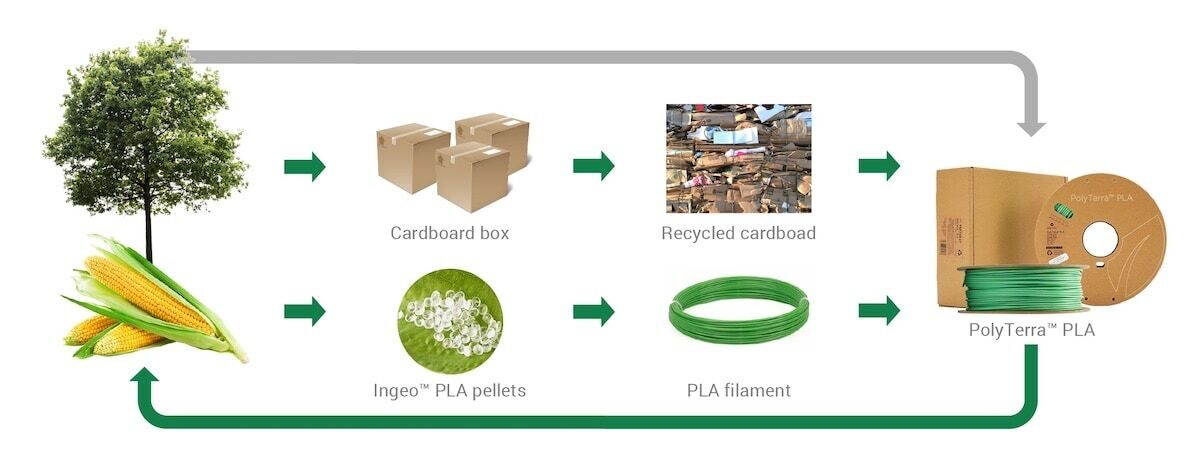
PolyTerra is leading the pack in terms of compostability of PLA filaments, meaning Ethentic prints will inherit this environmentally friendly quality as they are created. Furthermore, Polymaker’s partnership with OneTreePlanted results in one new tree being planted per spool of filament, with over 130,000 trees planted to date. The breakdown of this carbon negativity is detailed here.
The Genesis Collection
The genesis collection on Ethentic - The Causeways - consists of 2500 pieces. Each owner of an Ethentic art piece gets membership benefits as the community grows, including but not limited to: exclusive minting opportunities, automatic whitelisting, and insider access to future products developed by the team.
Check out the Ethentic Twitter and Discord chat for information on how to participate in the upcoming sale, and join us as a founding member of the Web3D initiative.
We'd like to present you with a Polymaker customer story. Check how AlemhReview uses PolyLite™ PETG to create his own Logo Lamp
Hello everyone,
Thank you for the opportunity to share and support my work!
For about 2 years I have been in the world of 3D printing and since 6 months I have opened my Instagram page and my YouTube channel (AlemhReview) in which I show my projects and my works. Over time the page has grown and I felt the need to have a physical space, a place dedicated to my social channels that had a distinctive sign. For this reason I decided to create and 3D print my logo and turn it into a lamp. I have to say thanks to Samuel Mazuy (@3dprint_design3d on Instagram) that helped me to model my logo aligning perfectly with my idea. He is very skilled and deserved so much!
In these pictures you can watch to the first renderings of the model.

As you can see in the image below, the model was designed to contain lights inside that would have been chosen later:
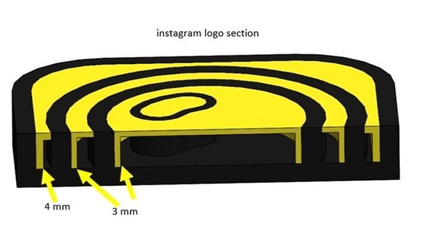
Once the model was ready I had to choose the material to use and thought the best choice was PolyLite™ PETG because I would have had to insert lights inside that would have generated heat and for this reason PLA would not have been suitable while materials such as ABS would have been excessive as well as being more difficult to print .The next step was to print all the about 18 parts so I divided file on Cura slicer based on color and size and start printing.
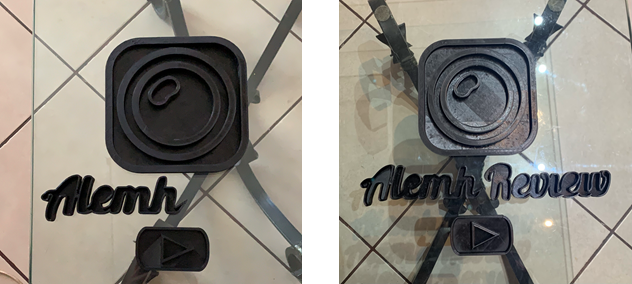
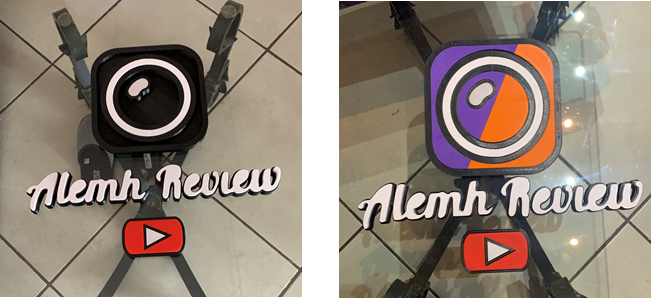
After I printed everything the difficult part began: the best option was to use single small led bulbs, but the difficulty for me was to find a way to fix them to the print and create an electrical system to turn them on, which I never did before. I like challenges and so I decided to go all the way and understand how to create the electrical system until I was able to create it. Beacuse of that I pierced the various pieces to be able to insert the bulbs.
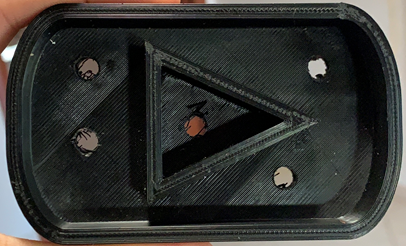
At this point I drew and cut a shape of my logo in pressed cardboard, which would have been useful both to give a background to the model and to hide the cables.
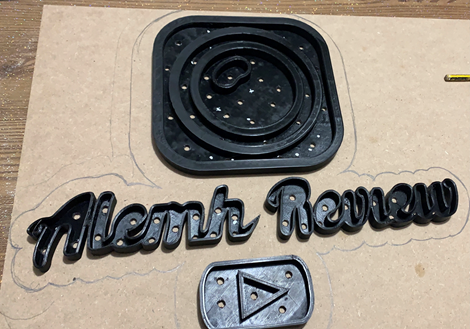
Then I glued the LEDs to the 3D printing with hot glue, maintaining an order of positive and negative poles in order to create a parallel lighting system. I recovered some copper wires and started to tie all the lights together and testing it:
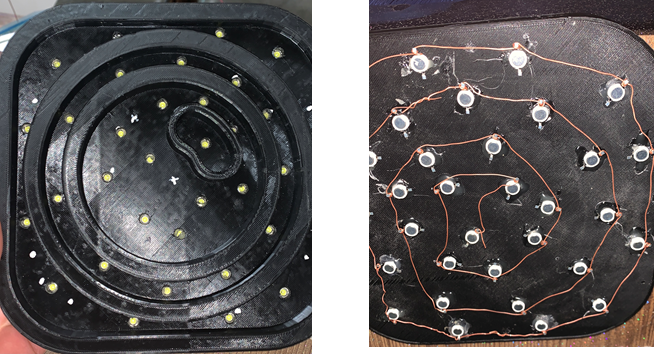
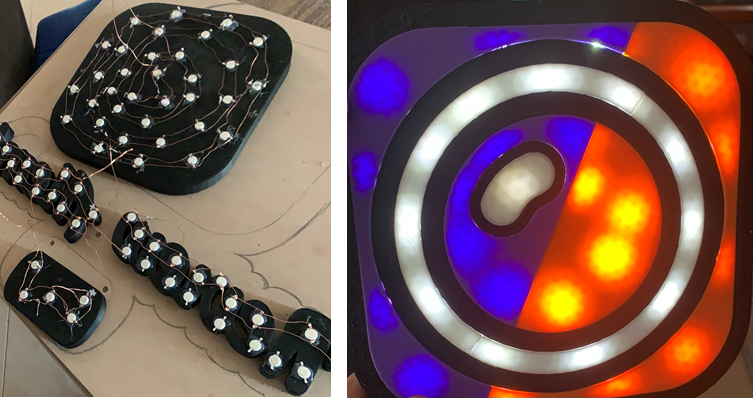
Next step, once the lighting system was finished, that remained was to paint the logo shape and fix the various prints to it through hot glue:
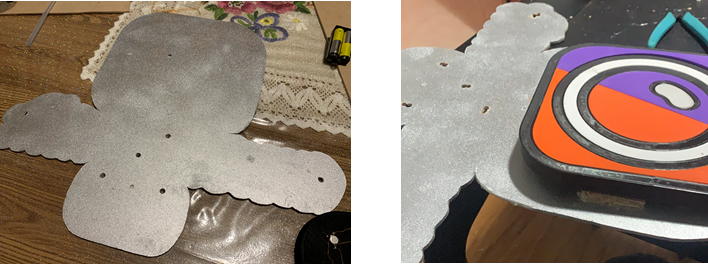
When the job was complete I plugged all the cables together and plugged in a socket of the correct voltage and an on / off button and finally I was able to fix it to the wall:
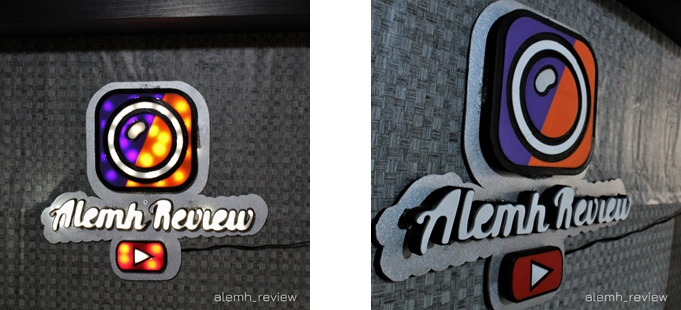
With these latest images here is a huge spoiler of my new little "studio", which is not yet complete, but finally has its distinctive feature in the center, the channel logo. I hope you enjoyed the project and that there will be new ones soon!
Keep printing and always believe in yourself!



